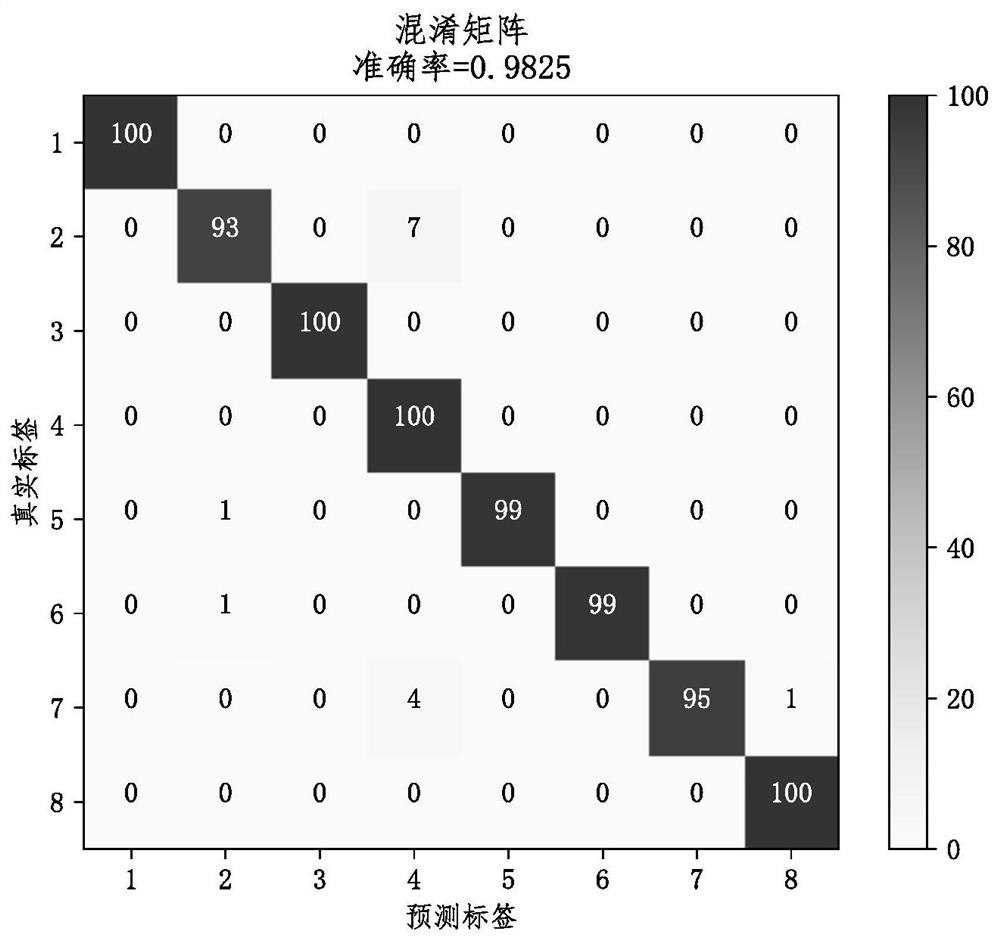Active interference identification method based on bilinear efficient neural network
A neural network and active jamming technology, which is applied in the field of radar jamming signal identification, can solve problems such as low accuracy, limited jamming types, and insufficient intelligence in jamming signal identification, achieving high precision and breaking through application limitations.
- Summary
- Abstract
- Description
- Claims
- Application Information
AI Technical Summary
Problems solved by technology
Method used
Image
Examples
Embodiment Construction
[0039] The present invention will be further described below in conjunction with the accompanying drawings.
[0040] The invention belongs to the field of radar interference signal recognition. The present invention designs an active interference recognition method based on a bilinear high-efficiency neural network, which converts one-dimensional interference signals into time-frequency images through time-frequency transformation, and integrates attention mechanism and Feature two-way extraction, using deep learning network for efficient classification and recognition. The invention does not require prior knowledge of the characteristics of the interference signal, has certain robustness under low interference-to-noise ratio, and breaks through the application limitation of the existing radar active interference identification method.
[0041] The object of the present invention is achieved like this: mainly comprise the following steps:
[0042] Step 1, establishing a math...
PUM
 Login to View More
Login to View More Abstract
Description
Claims
Application Information
 Login to View More
Login to View More - R&D Engineer
- R&D Manager
- IP Professional
- Industry Leading Data Capabilities
- Powerful AI technology
- Patent DNA Extraction
Browse by: Latest US Patents, China's latest patents, Technical Efficacy Thesaurus, Application Domain, Technology Topic, Popular Technical Reports.
© 2024 PatSnap. All rights reserved.Legal|Privacy policy|Modern Slavery Act Transparency Statement|Sitemap|About US| Contact US: help@patsnap.com










